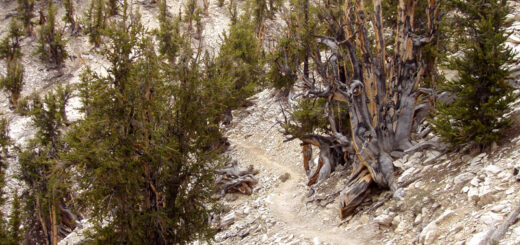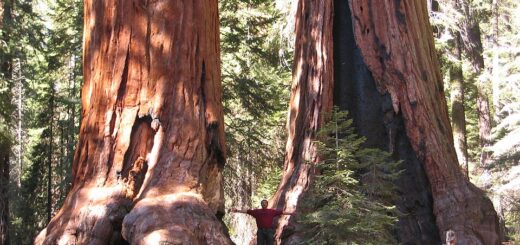American Elm Tree – Ulmus americana
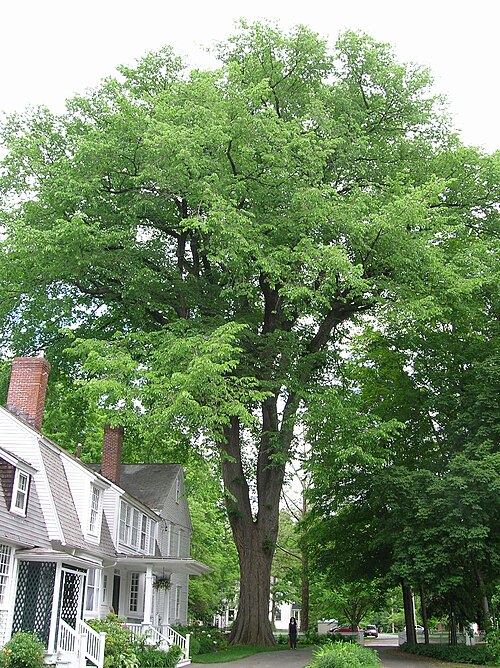
The American Elm (Ulmus americana) is one of the most iconic trees in North America, known for its beauty, resilience, and rich history. With its sweeping canopy, deep green leaves, and distinct vase-like shape, the American Elm has long been a staple of American landscapes, from bustling city streets to tranquil rural areas. But beyond its aesthetic appeal, this tree has a fascinating story, filled with both triumphs and challenges.
A Unique Appearance
The American Elm is easily recognizable due to its unique, graceful form. This tree can grow quite tall—up to 80 feet or more—forming a wide, arching canopy that provides a dense, cooling shade. Its branches often stretch out in a symmetrical, vase-like shape, making it a sought-after tree for landscaping and street plantings.
The leaves are elliptical, with serrated edges, and they turn yellow in the fall, adding to the tree’s seasonal charm. The bark, deeply ridged and furrowed, gives the tree an aged and textured look. Its rapid growth rate—growing up to 6 feet in a single season—also contributes to its appeal as a fast-growing shade tree.
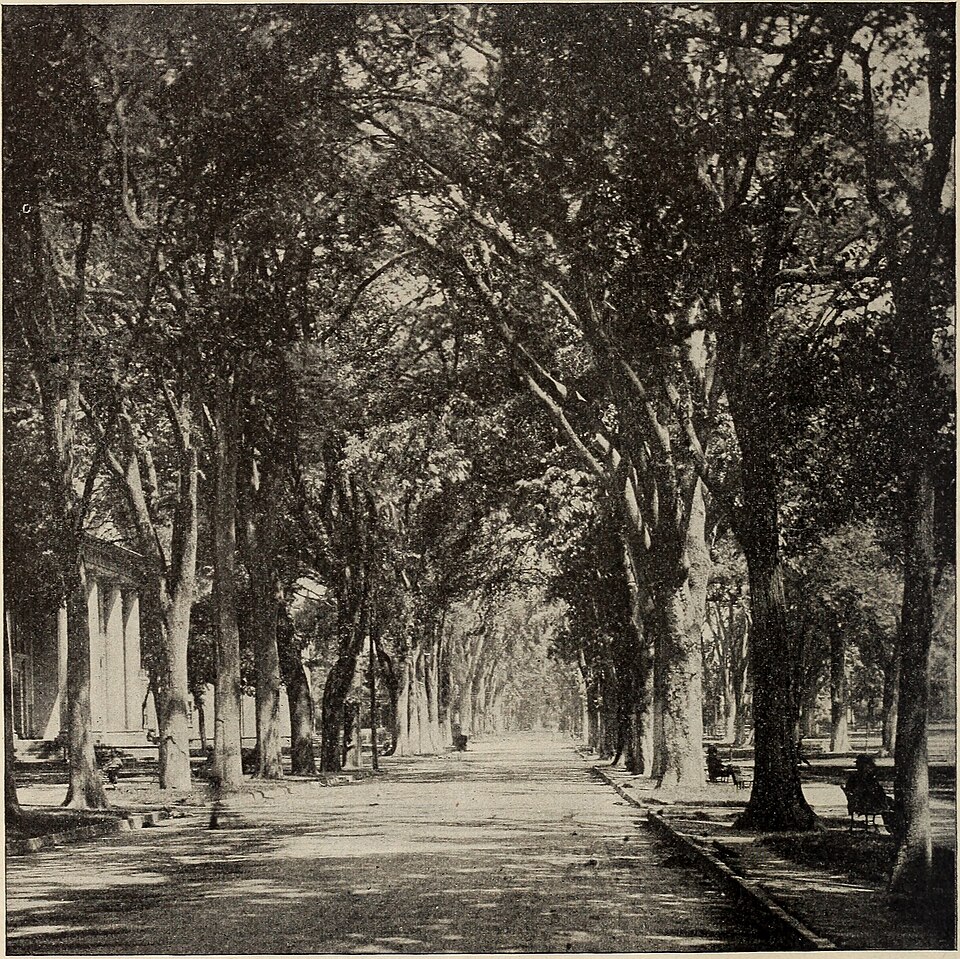
American elm avenue, New Haven, Connecticut (1901), Thomas Meehan and Sons catalogue. © Creative Commons | Author: Internet Archive Book Images
The Importance of American Elm in History
The American Elm has played an important role in both ecological and cultural history. Before the spread of Dutch Elm Disease in the 20th century, elms were the quintessential urban tree in many American cities. Their towering presence along boulevards and streets was a hallmark of American landscaping.
In many places, particularly in the Northeastern United States, the American Elm was commonly planted along streets, where its broad canopy offered shade to pedestrians. It was also a symbol of strength and endurance, with its long lifespan and resilient nature, often standing tall through harsh winters and fierce storms.
In fact, the elm tree has even made its mark in American folklore. One of the most famous American Elms was the “Washington Elm” in Cambridge, Massachusetts, which is believed to be the site where George Washington took command of the Continental Army in 1775. The tree became a symbol of American independence and resilience, representing the nation’s fight for freedom.
The Dutch Elm Disease Crisis
Unfortunately, the American Elm’s reign was not without its struggles. Starting in the 20th century, the species faced a severe ecological challenge: Dutch Elm Disease (DED). This disease, caused by a fungus carried by elm bark beetles, began to decimate elm populations across North America. The fungus blocks the tree’s water transport system, causing it to wilt and die.
By the mid-1900s, millions of American Elms were lost to this devastating disease. Urban planners and landscape architects faced difficult decisions, as entire neighborhoods that had been built around the canopy of these trees had to make way for replacements. The disease was so pervasive that many cities lost their signature elm-lined streets.
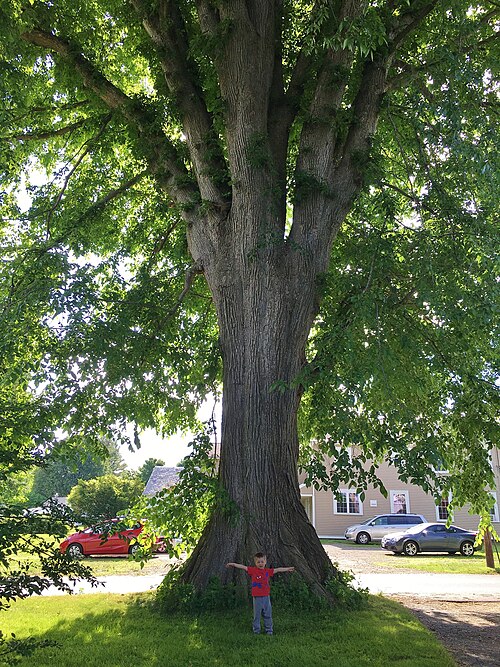
Photograph of an American elm tree located in Hatfield, Massachusetts, with a small child for scale. (Photo taken in June 2020.) Tree measurements as of November 2019: girth 17.5 ft, 11 in at 4.5 ft above ground; height 86 ft; spread 87 ft. © Creative Commons | Author: Marty Aligata
Efforts to Save the American Elm
Though Dutch Elm Disease has caused irreparable damage to American Elm populations, efforts to restore and protect the species are ongoing. There has been considerable research into breeding resistant varieties of American Elm. Some of these efforts have led to the development of hybrid varieties that show resistance to the disease, such as the ‘Princeton’ and ‘Valley Forge’ elms.
Additionally, improved management techniques, including proper tree care and proactive pest control, are being implemented to help preserve the remaining American Elms. These measures, combined with research and genetic advancements, offer hope that future generations can again experience the grandeur of this beloved tree.
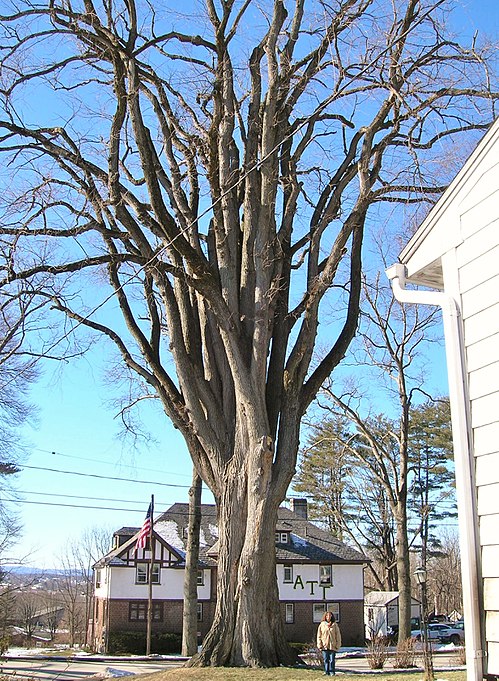
Photo of American Elm tree located in western Massachusetts, taken on January 27, 2013. © Creative Commons | Author: Marty Aligata
Ecological Importance
Beyond its role in American history, the American Elm is also ecologically significant. The tree is a host for a wide variety of wildlife, including birds, insects, and mammals. The leaves of the American Elm provide food for several species of caterpillars, while its seeds attract birds and small mammals. Its shade creates a cool, inviting environment for various plants and animals, making it an integral part of its ecosystem.
Additionally, the American Elm’s strong root system helps stabilize the soil, preventing erosion along riverbanks and in urban areas. Its ability to withstand harsh weather conditions also makes it a valuable asset for maintaining the health of urban environments.
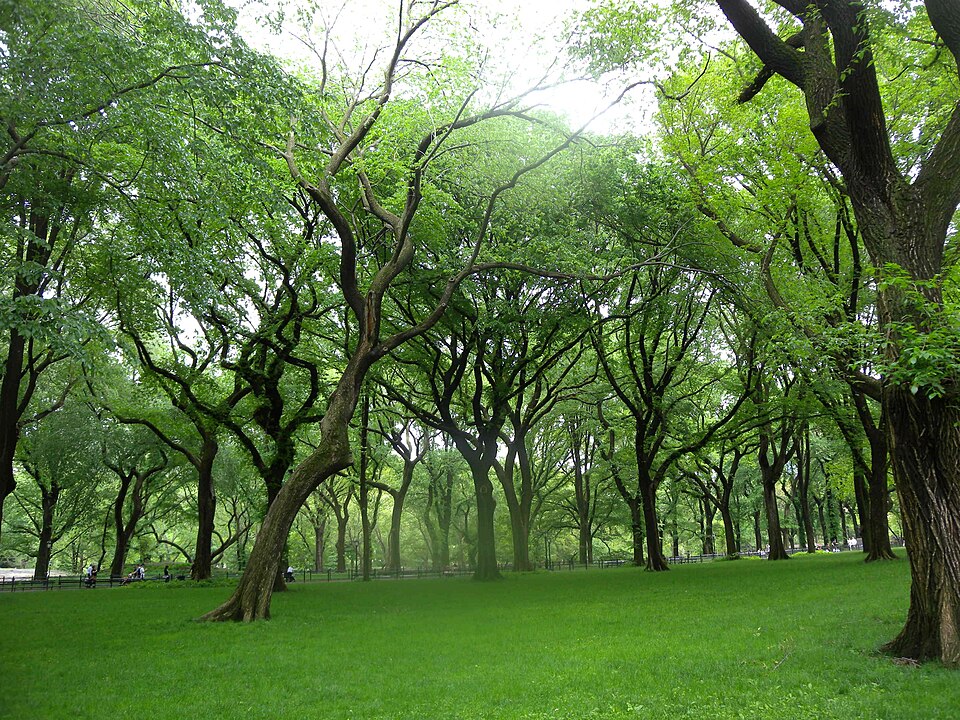
American elms, Central Park, Manhattan, New York City (Spring 2011) © Creative Commons | Author: Jim.henderson
Planting and Caring for American Elms
For those looking to add an American Elm to their landscape, it’s important to choose a healthy, resistant variety, particularly one of the hybrid varieties that are more resistant to Dutch Elm Disease. When planting an American Elm, ensure it has plenty of space to grow, as these trees have large, spreading root systems. They thrive in full sun and well-drained soil, but they can adapt to a variety of soil types.
Like any tree, American Elms require regular care, including watering during dry spells, pruning to maintain a strong structure, and monitoring for pests. Ensuring the tree is planted in an area where it has ample space will allow it to grow to its full potential and provide shade and beauty for years to come.
References:
[Ulmus americana L.] https://www.srs.fs.usda.gov/pubs/misc/ag_654/volume_2/ulmus/americana.htm
[Wikipedia] https://en.wikipedia.org/wiki/Ulmus_americana


